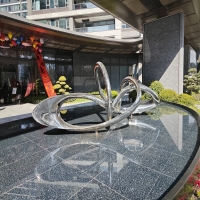Welcome to the website for landscape facilities products and knowledge.
How do the material choices in landscape chairs impact their resistance to graffiti in public spaces?
The selection of materials for landscape chairs in public spaces plays a critical role in their ability to resist graffiti and vandalism. Graffiti not only degrades aesthetics but also increases maintenance costs. To combat this, designers and urban planners prioritize materials that are inherently resistant to paint adhesion or easy to clean.
1. Non-Porous Surfaces: Materials like powder-coated metals, treated concrete, and high-density plastics are less prone to graffiti because their smooth surfaces prevent paint from bonding deeply. These materials allow for easy removal with pressure washing or mild solvents.
2. Anti-Graffiti Coatings: Some chairs are treated with specialized coatings that create a protective barrier. These coatings either repel paint or enable effortless cleaning, ensuring long-term durability in high-traffic areas.
3. Dark or Patterned Finishes: Dark-colored or textured materials can make graffiti less visible, discouraging vandals. Patterns and matte finishes also reduce the appeal of blank canvases for tagging.
4. Cost-Effective Maintenance: Choosing low-maintenance materials like stainless steel or recycled polymers reduces the financial burden of graffiti removal, making them ideal for public budgets.
By integrating these material strategies, cities can create functional, vandal-resistant outdoor furniture that maintains its appearance and longevity in urban landscapes.
Related search:

Recommendation
Abstract art sculpture, stainless steel metal sculpture, large-scale water feature sculpture